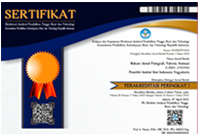Analysis of Applied Manga Visual Style in an Audio Visual Advertisement: Indomie x Pop Mie Tori Kara Flavour (2024)
Abstract
Indomie released a spicy version of the premium instant ramen collection– Tori Kara flavor– in January 2024. While it serves as an addition to the initial release of the first three ramen flavors, it was advertised with Manga Visual style, unlike any other Indomie promotional releases. The advertisement was analyzed using 8 manga visual story telling techniques to further observe the role of Japanese art mediums for a non-Japanese target audience, in this case for Indonesian audiences. The role of characters, facial expressions, poses, expressive effects and motion, sense of place, world details, wordless panels and aspect-to-aspect transitions, and genre maturity creates an immersive effect towards Indonesian audience to experience a Japanese-inspired product. A big portion of Japanese visual keys was retained, with explicit and implicit behaviours still recognizable to Indonesian audiences, hence catching adolescents’ attention and increasing the level of immersiveness while watching the advertisement.
Keywords
Full Text:
PDFReferences
Ahmad, H. A., Hibino, H., & Koyama, S. (2012). Engagement while Reading Manga: Measuring Indonesian Readers’ Immersion within Manga’s Universe. https://www.researchgate.net/publication/319643379
Anderson, D., Shimizu, H., & Iwasaki, S. (2017). Memories of Manga: Impact and Nostalgic Recollections of Visiting a Manga Museum. Curator: The Museum Journal, 60(4), 505–525. https://onlinelibrary.wiley.com/doi/abs/10.1111/cura.12248
Anny. (2018, May 26). Screen Tones for Manga - Drawing a Professional Comic Book. https://onedogcomics.com/2018/05/26/screen-tones-drawing-manga/
Aziz, M., & Ong, S. (2023). The implementation of Japanese animation (anime) In advertising. J. Indones. Sos. Sains, 4(04), 370–383. chrome-extension://efaidnbmnnnibpcajpcglclefindmkaj/https://d1wqtxts1xzle7.cloudfront.net/105827516/1524-libre.pdf?1695174364=&response-content-disposition=inline%3B+filename%3DThe_Implementation_of_Japanese_Animation.pdf&Expires=1761608033&Signature=G~B~jl2smj67hdbYdyuJrFA6-bjX-m51qlShN6FQd5XUu5dFk5uvPqCDpYdR5kl5tJ50Xh2ydgYP7u0~LN3W4nktStqN4Q0m2kxws5TPMjtjRmgkSrIM7lbIIVzfTtsAs9ksKqTVKqtTpRzCgj8mRGQlS8ckJkZAgxKowqpSyd~Cqyn2bnU7~jYl494UqjOnRlpvT9vKHrh-yZ78KksmerM~3i1qgd09M4BCAecZQ1YmCvHPdxHoSoWq-tv3jves8Po8jxYIwwTC0eWlRWnk9Vc4pn0ElSvUmNGt5~sv~HMZdJ5dTd3b~A-xkJLWCuaWZninX3BtQeIPhwDRHiIjFA__&Key-Pair-Id=APKAJLOHF5GGSLRBV4ZA
Busselle, R., & Bilandzic, H. (2009). Measuring Narrative Engagement. Media Psychology, 12(4), 321–347. https://www.tandfonline.com/doi/abs/10.1080/15213260903287259
Clopton, K. K. (2018). Now Hear This: Onomatopoeia, Emanata, Gitaigo, Giongoo–Sound Effects in North American Comics and Japanese Manga and How They Impact the Reading Experience. The Ohio State University. https://www.proquest.com/openview/86422b6a1e9129aea50f3d93ecdd1341/1?pq-origsite=gscholar&cbl=18750&diss=y
Dr. Drs. Ismail Nurdin, M. S., & Dra. Sri Hartati, M. S. (2019). METODOLOGI PENELITIAN SOSIAL. Penerbit Media Sahabat Cendekia. http://eprints.ipdn.ac.id/4510/2/BUKU%20METODOLOGI%20PENELITIAN%20SOSIAL.pdf
Fattahi, M., Shir, D., & Asadollahi, M. (2014). THE POSITION OF MOTION GRAPHIC IN COMMUNICATION MEDIA. Indian J.Sci.Res, 7(1), 815–819. https://citeseerx.ist.psu.edu/document?repid=rep1&type=pdf&doi=045f5d62828be8b15d021f7078c3794f46bebb78
Hermenau, S. (2018). Manga as a Cultural National Brand. Economy, Culture & History Japan Spotlight Bimonthly, 37(5), 62–65.
Kahfi, M., Akmal, M., Choirunnisa, D., Meidiana, R., & Nurlelah, S. : (2023). DAMPAK HIPERREALITAS PADA IKLAN AUDIO VISUAL INDOMIE RAMEN. In Seminar Nasional Desain dan Media. https://proceeding.unindra.ac.id/index.php/semnasdesainmedia/article/view/7032
Limano, F., Piliang, Y. A., Damajanti, I., & Koesma, R. E. (2021). Studi Tentang Digitalisasi Ondel-Ondel Betawi Melalui Teknologi 3D Animasi. Rekam: Jurnal Fotografi, Televisi, Animasi, 17(2), 135–145. https://journal.isi.ac.id/index.php/rekam/article/view/5138/2370
Luthfan. (2021, June 22). Nikmatnya Ramen, Makanan Jepang yang Populer di Indonesia. Kompas TV. https://www.kompas.tv/feature/186073/nikmatnya-ramen-makanan-jepang-yang-populer-di-indonesia
McCloud, S. (2006). Making comics: Storytelling Secrets of Comics, Manga and Graphic Novels. https://philpapers.org/rec/MCCMCS-2
Nesa Agustina. (2015). ANALISIS KONTRASTIF GITAIGO ITAMI (PERASAAN SAKIT) DALAM BAHASA JEPANG DENGAN BAHASA SUNDA [Universitas Pendidikan Indonesia]. https://repository.upi.edu/12222/
Revenue in the sauces & spices segment of the food market Indonesia from 2018 to 2028. (2024). https://www.statista.com/forecasts/1439119/revenue-sauces-spices-food-market-indonesia
Sokolova, K., Perez, C., & Vessal, S. R. (2024). Using social media for health: How food influencers shape home-cooking intentions through vicarious experience. Technological Forecasting and Social Change, 204, 123462. https://doi.org/10.1016/J.TECHFORE.2024.123462
Surya, R., & Tedjakusuma, F. (2022). Diversity of sambals, traditional Indonesian chili pastes. Journal of Ethnic Foods, 9(1), 25. https://link.springer.com/article/10.1186/s42779-022-00142-7
Suzanna Anderson Creates. (2015, May 27). Understanding Comics: The Invisible Art (Review). The Odd Ducks. https://theoddducks.wordpress.com/2015/04/27/understanding-comics-the-invisible-art-review/
Tania, L., Kharras, K. A., & Fadlilah, A. (2021). BAHASA IKLAN INDOMIE PERIODE TAHUN 2021 (Vol. 1, Issue 2). https://journal.uns.ac.id/meister/article/download/772/416/3644
DOI: https://doi.org/10.24821/rekam.v21i2.13114
Refbacks
- There are currently no refbacks.

This work is licensed under a Creative Commons Attribution 4.0 International License.



